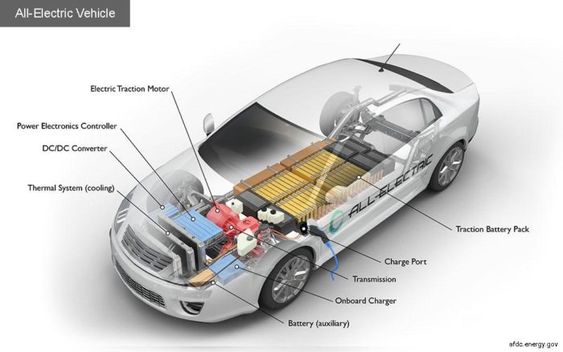Driving an electric car (EV) involves a different set of considerations compared to driving a traditional internal combustion engine (ICE) vehicle. While many aspects of driving remain the same, there are specific precautions and best practices unique to electric vehicles. Here are the key areas to focus on for safe and efficient EV driving:

Understanding the Basics of Your EV
- Familiarize Yourself with the Vehicle:
- User Manual: Read the user manual thoroughly to understand the specific features, functions, and limitations of your EV.
- Dashboard Indicators: Learn the meaning of different dashboard indicators and alerts specific to electric vehicles, such as battery charge levels and regenerative braking status.
- Charging Ports: Know the location and type of charging ports your EV uses, and understand how to connect and disconnect charging cables properly.
- Battery Management:
- Charge Levels: Regularly monitor your battery charge levels. Avoid letting the battery charge drop too low, as this can impact battery health and leave you stranded.
- Charging Routine: Establish a consistent charging routine. Overnight charging at home is often the most convenient and cost-effective option.
- Public Charging Stations: Familiarize yourself with the locations of public charging stations along your typical routes and destinations. Use apps or the car’s navigation system to locate nearby chargers.
Safe Driving Practices
- Driving Style:
- Smooth Acceleration and Deceleration: Electric cars respond quickly to acceleration and braking. Practice smooth acceleration and deceleration to maximize range and ensure passenger comfort.
- Regenerative Braking: Utilize regenerative braking to recover energy during deceleration. This feature can help extend your driving range and reduce wear on traditional brakes.
- Speed Management: High speeds significantly reduce the range of electric vehicles. Drive at moderate speeds to conserve battery life, especially on highways.
- Adapting to EV-Specific Features:
- One-Pedal Driving: Some EVs offer one-pedal driving, where releasing the accelerator slows the car down without needing to press the brake pedal. Get accustomed to this feature if your EV has it.
- Eco Modes: Use eco-driving modes to optimize battery usage and extend range. These modes adjust the car’s performance settings to prioritize efficiency.

Environmental and External Factors
- Weather Considerations:
- Cold Weather: Cold temperatures can reduce battery efficiency and range. Pre-condition your EV (warming it up while it’s still plugged in) to reduce battery strain during winter.
- Hot Weather: High temperatures can also impact battery performance. Park in the shade and use climate control settings wisely to maintain a comfortable cabin temperature without excessively draining the battery.
- Terrain and Road Conditions:
- Hilly Terrain: Climbing steep hills requires more energy, reducing range. Plan your trips accordingly and make use of regenerative braking on downhill slopes.
- Road Surfaces: Rough or unpaved roads can affect your EV’s performance and efficiency. Drive carefully to avoid damage to the vehicle and reduce energy consumption.
Safety and Maintenance
- Regular Maintenance:
- Scheduled Service: Follow the manufacturer’s recommended service schedule. While EVs require less maintenance than ICE vehicles, regular check-ups are essential for components like the battery, brakes, and tires.
- Software Updates: Ensure your EV’s software is up-to-date. Manufacturers often release updates to improve performance, add features, and enhance safety.
- Emergency Preparedness:
- Emergency Kit: Keep an emergency kit in your car, including a portable charger, tire repair kit, first-aid supplies, and any other essentials.
- Roadside Assistance: Familiarize yourself with the roadside assistance services available for your EV. Some manufacturers offer specialized support for EV drivers.
Charging Precautions
- Home Charging Safety:
- Proper Installation: Have your home charging station installed by a qualified electrician to ensure it meets all safety standards.
- Electrical Load: Be aware of the electrical load in your home. Avoid overloading circuits by balancing the use of other high-power appliances during charging.
- Public Charging Etiquette:
- Charging Protocol: Follow proper protocol at public charging stations. Don’t occupy a charging spot longer than necessary, and always leave the area clean and tidy.
- Respect for Others: Be considerate of other EV drivers. Move your car once it’s fully charged to allow others to use the charger.

Range Management and Trip Planning
- Route Planning:
- Trip Planning Tools: Use trip planning tools and apps to map out your journey, including charging stops. Plan for contingencies in case a charging station is unavailable or out of service.
- Range Buffer: Maintain a buffer in your range estimate to account for unexpected detours or delays. It’s advisable to plan to reach your destination with at least 20% battery remaining.
- Energy Consumption Awareness:
- Monitor Consumption: Keep an eye on your EV’s energy consumption, particularly during long trips. Use in-car displays or apps to track usage and adjust driving habits accordingly.
- Minimize Auxiliary Usage: Limit the use of energy-intensive features like air conditioning, heating, and entertainment systems during long drives to maximize range.
Legal and Regulatory Considerations
- Local Regulations:
- EV-Specific Laws: Stay informed about local regulations and incentives related to electric vehicles. Some regions offer benefits such as free parking, carpool lane access, or toll reductions for EVs.
- Emission Standards: Understand emission standards and regulations, especially if traveling to areas with strict environmental policies or low-emission zones.
Final Thoughts
Driving an electric vehicle offers numerous advantages, including lower operating costs, reduced environmental impact, and a quieter, smoother driving experience. By taking these precautions and adopting best practices, you can ensure a safe, efficient, and enjoyable journey in your EV. Remember that the EV landscape is continually evolving, with advancements in technology, infrastructure, and regulations. Staying informed and adaptable will help you make the most of your electric driving experience.